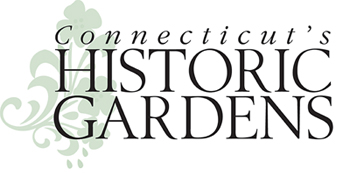Thank you Irene Skrybailo from Promisek at Three Rivers Farm, Bridgewater
I’m often asked.. how true is the garden at Three Rivers Farm to Beatrix Farrand’s vision? Many visitors are curious about substitutions and changes that have affected plant selections in our 16 beds.
The garden is not the same place it was in 1921. The trees around the garden have matured, now there is shade where there was once full sun. Some varieties of plants are simply no longer available. Other times, necessity calls for changes.
Farrand’s garden plan calls for hollyhocks, which often fall victim to Puccinia malvacearum or hollyhock rust. This has been a problem for gardeners since the late 1800s and seems neverending despite all the fungicides and tears. I would frantically clean up affected leaves (sanitation is key!) to no avail, until the Black Knight came into my life.

I’ve substituted “The Watchman” with “Black Knight”, a variety resistant to rust and it’s been a great success. A stunner! I’m sure Farrand would approve, the colors are identical to her selection.

Another change – swapping junipers with yews. Junipers tend to get woody when in a small space, for a while Three Rivers Farm had arborvitae planted around the small pool area. As many nutmeggers already know, arborvitae may as well mean “deer candy” in Latin and are a poor choice even in a fenced garden in this area. A few years ago I planted yews (Taxus media L.C. Bobbink) which while not completely immune are less attractive as a late night snack for deer.

We’ve reintroduced dahlias into the garden, even with underground vermin waiting in the wings. Dahlias are planted into the ground in large pots and remain undisturbed. No need to spread rodenticide that will eventually kill the very animals that keep the rodent population in check!

Another favorite snack for critters are gladiolus bulbs. For several years I’ve been creating cages out of chicken wire to shield the glads from hungry jaws… but this year I’ve planted another type of gladiolus, Gladiolus acidanthera. These bulbs are not on the short list for rodents, and they’re healthy and ready to bloom! The colors are in keeping with the Farrand palate, they’re a great fit for this and really any garden. The bulbs do have to be lifted in the fall but they are far less work than other varieties of glads.
Gardening in a changing environment is challenging, but there are so many options, its exciting to see what actually works and works well! Who knows what next year will bring. In the meantime, I hope to see you in the garden, our next open garden date is July 26th! Come visit!
